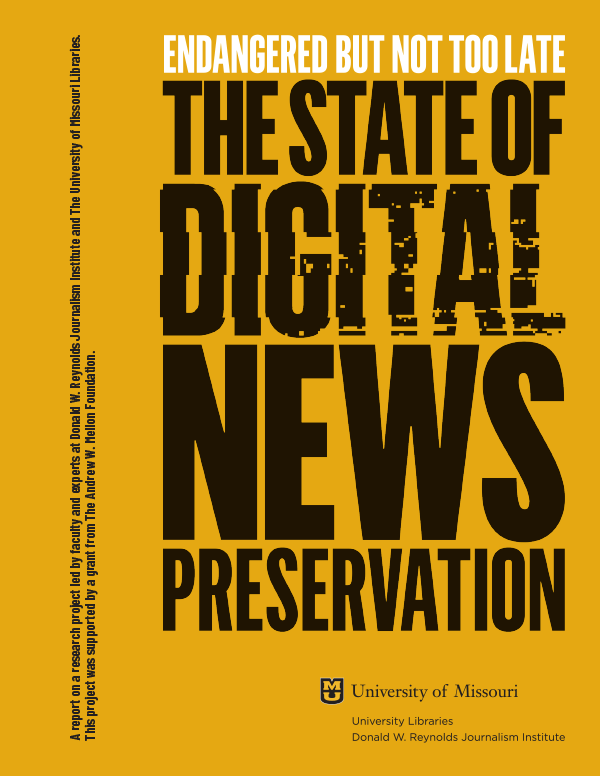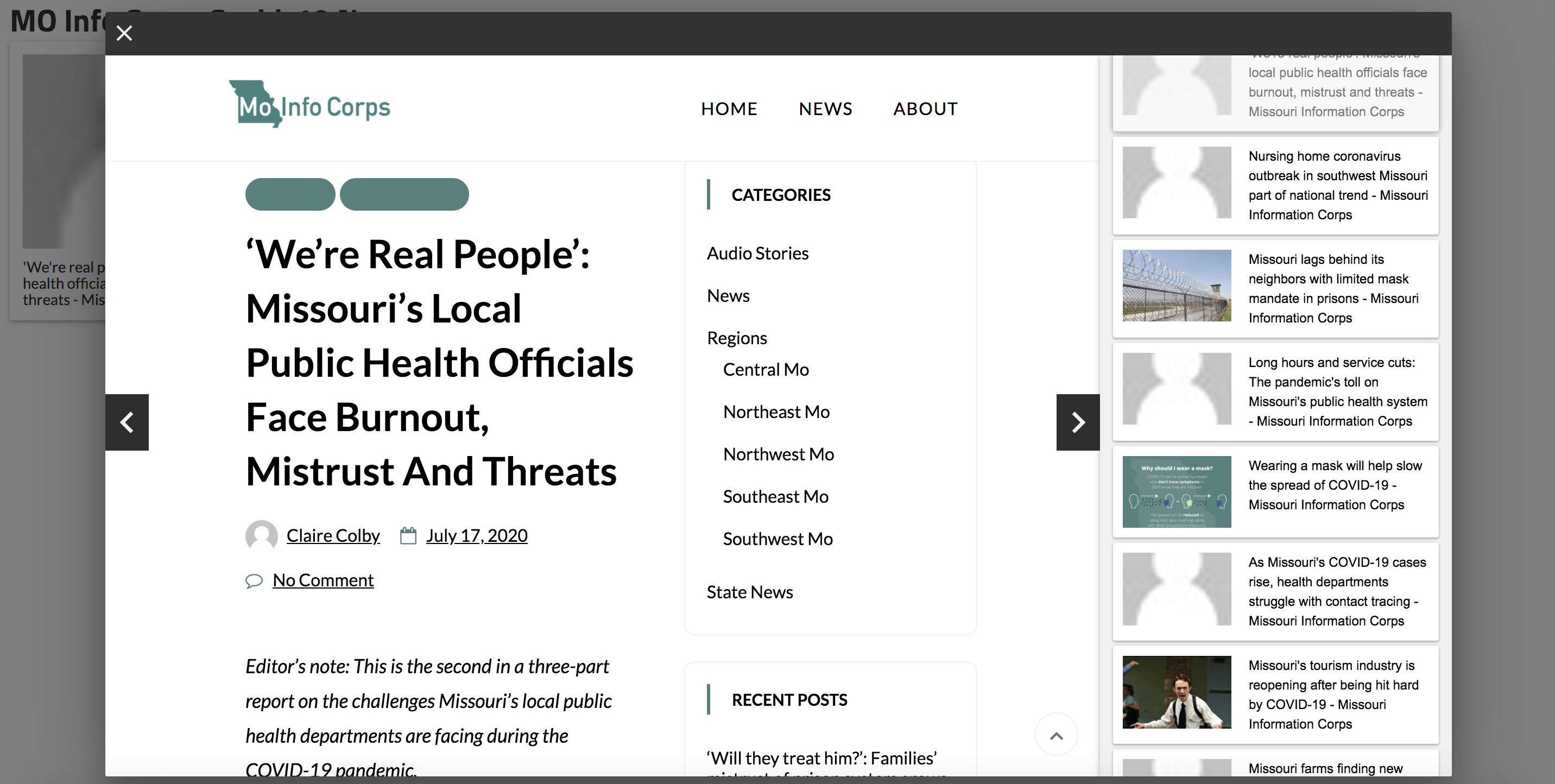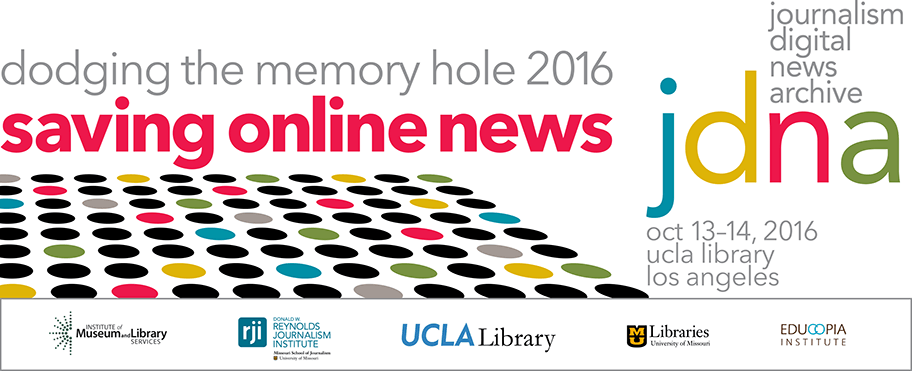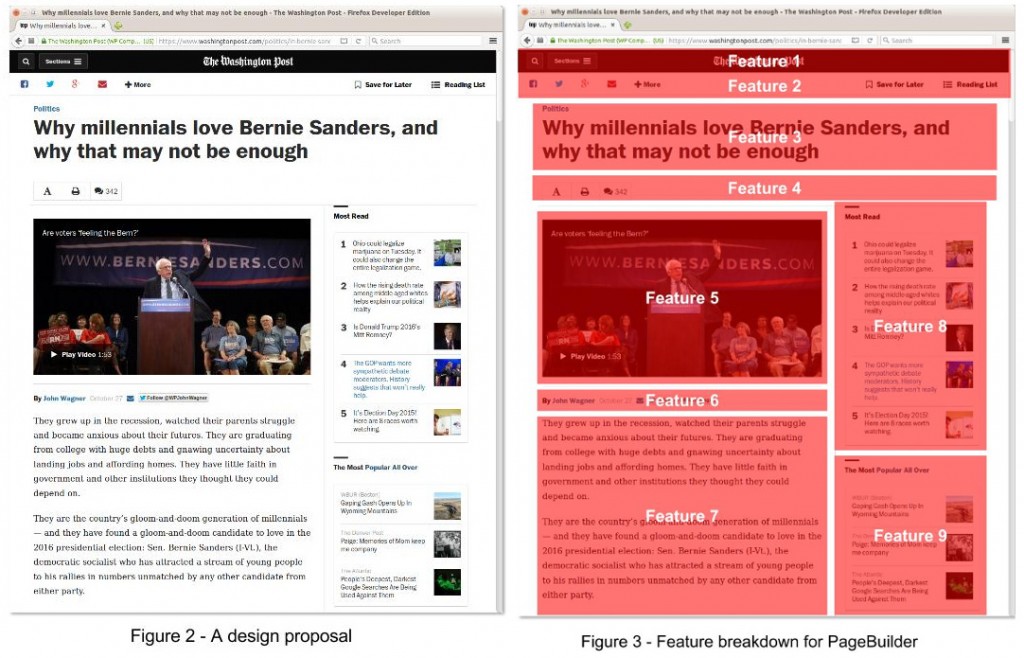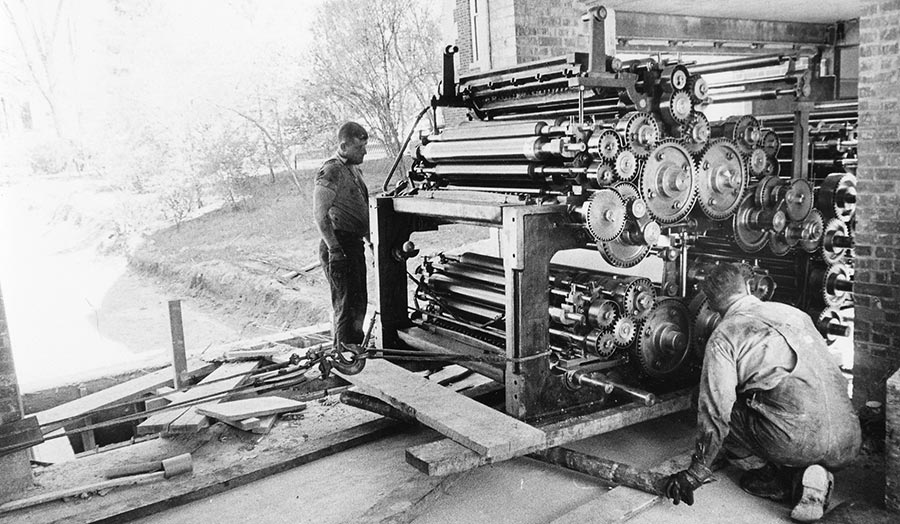
Tag: CMS
New report shows it’s time to preserve your digital news
As news media organizations hustle to publish today’s news, it can be a struggle for them to think about how to keep their digital content from disappearing.
What’s Working: Newsletters may be reaching their limits, but there’s hope beyond the inbox
The views expressed in this column are those of the author and do not necessarily reflect the views of the Reynolds Journalism Institute or the University of Missouri. Email newsletters are thriving, but their ascendancy in today’s media brings with it a certain foreboding: Given how successful the format has been the past few years … Continued
The Missouri Info Corps COVID-19 widget
What is the COVID-19 widget? And why should I want it on my news site? This widget is a free and easy way for your news organization to display Missouri Info Corps COVID-19 stories on your news site. If your news organization has taken a hit in resources and reporters over the past few months, this … Continued
White paper: Two days dedicated to Dodging the Memory Hole
This white paper summarizes the Dodging the Memory Hole 2016: Saving online news event, with overviews of the panels and presentations, and projects produced by groups at the conference as well as student scholarship recipients. On Oct. 13–14, 2016, University of Missouri Libraries, in collaboration with the Donald W. Reynolds Journalism Institute, UCLA Library and … Continued
How The Washington Post built a publishing platform accidentally on purpose
The Elizabethan dramaturge John Webster gave one of his characters these immortal words: “There’s nothing of so infinite vexation/As man’s own thoughts.” Of course, he was lucky enough to live nearly 400 years before the first content management system was invented. In early 2013, The Washington Post found itself in a particularly vexing situation: The … Continued
WordPress moves news past the printed newspaper
Local newspaper sites have long broken all the rules for building a sticky site. Most still load painfully slowly. They are difficult to navigate and — let’s be honest — often ugly.—Matthew Hindman, Shorenstein Center For centuries newspaper design has stayed about the same. In 1880 printers introduced halftone photographs and in the 1980s the … Continued
Need for speed 2: Newspaper data diving, metrics and methodologies
Welcome to the weeds, fellow bit-twisters and data divers. We can chat here without worrying about the numeracy nonbelievers. This post details the methodologies used in “Need for speed 1: Newspaper load times give ‘slow news days’ new meaning.” First, you and I both know “load time” is a fickle metric, completely dependent on the … Continued
News companies as tech companies: Some venture capitalists say yes
For years, the drumbeat among venture capitalists has been that content is expensive and is not worth their investment. But we’ve seen a turnaround, and the question is, why now? The answer may simply be optimism. As Hamish McKenzie and Sarah Lacy wrote in Pando Daily of the return to content: Large funding rounds don’t … Continued
